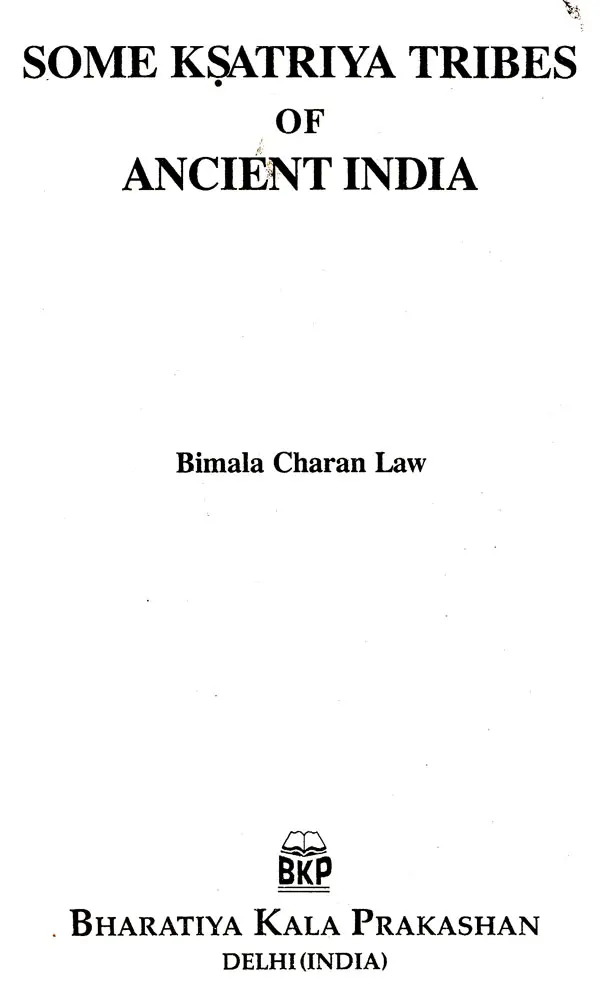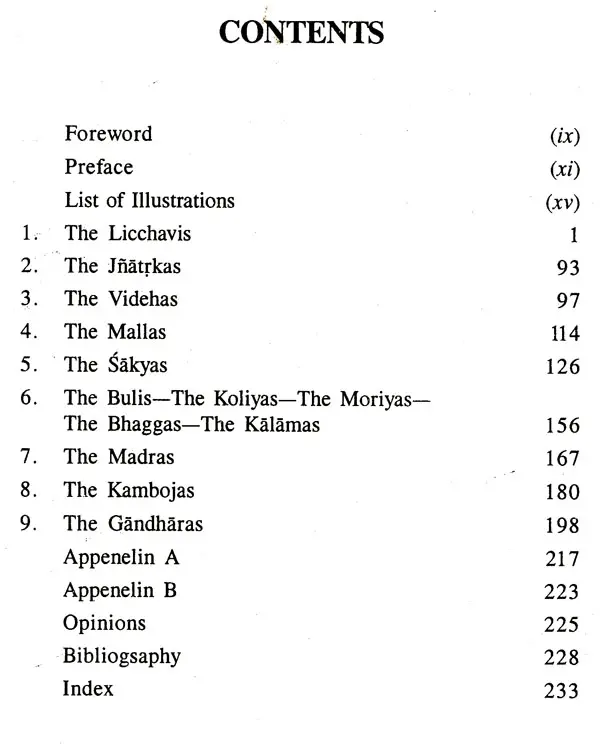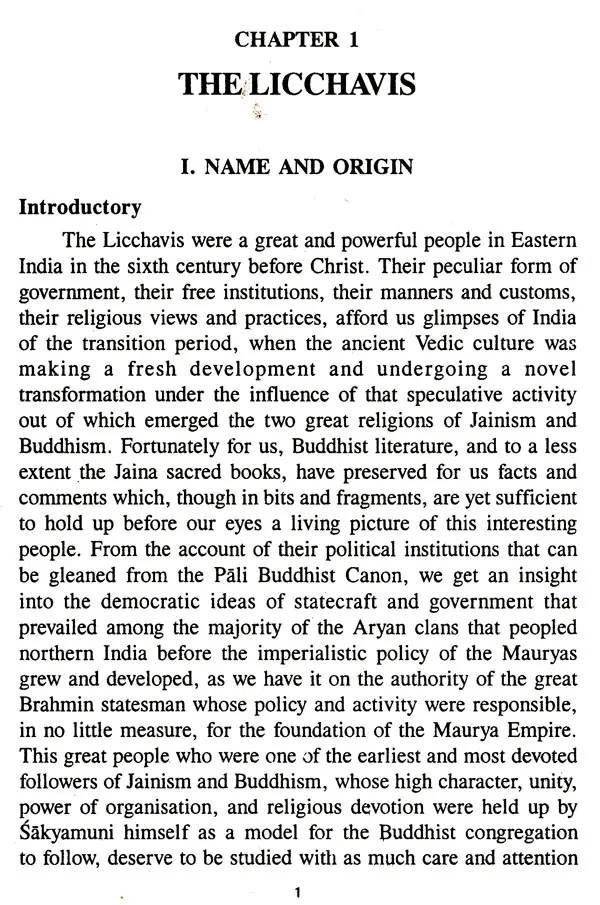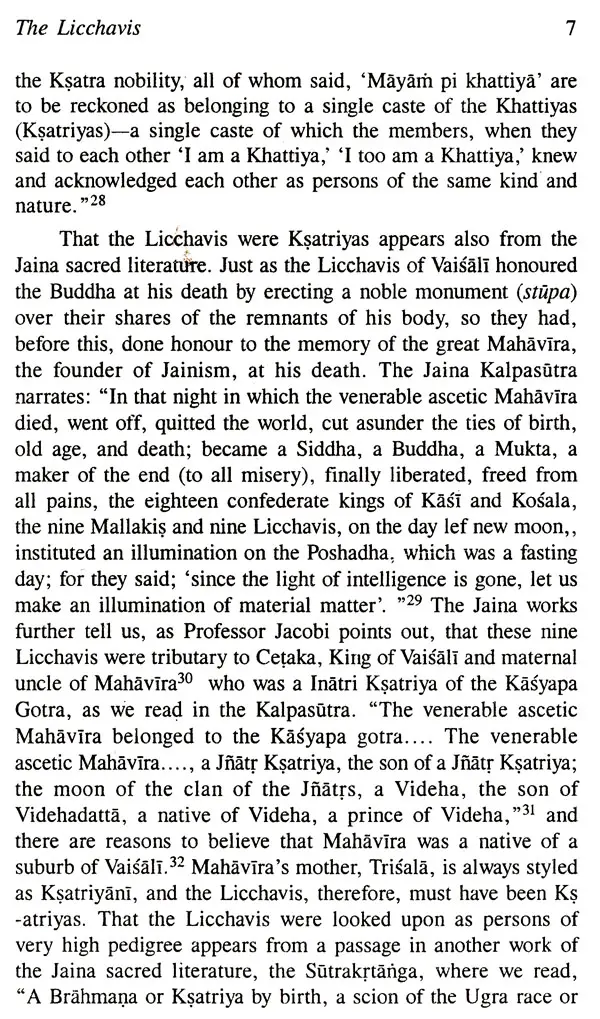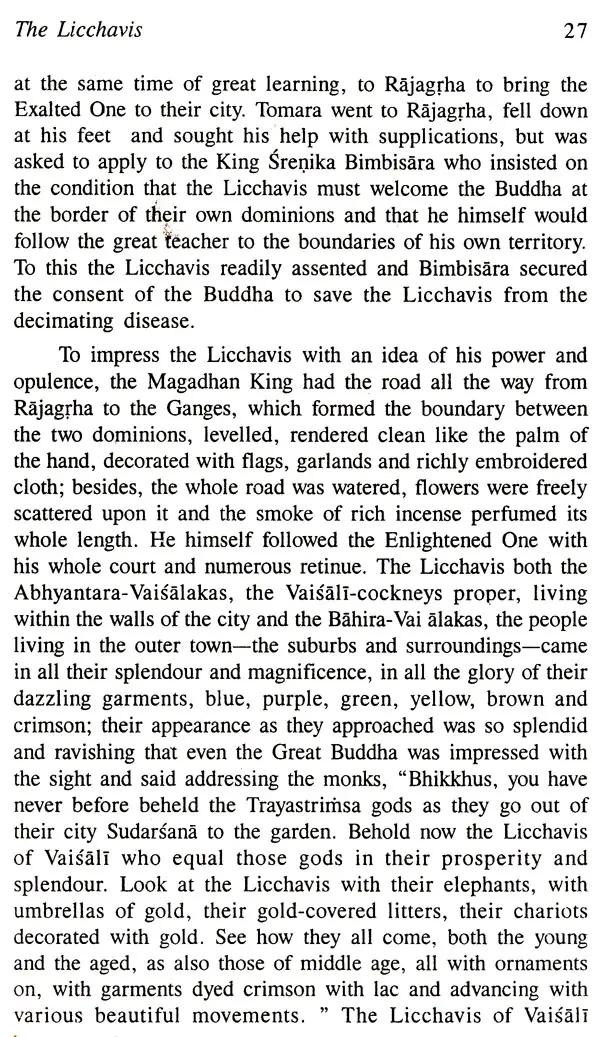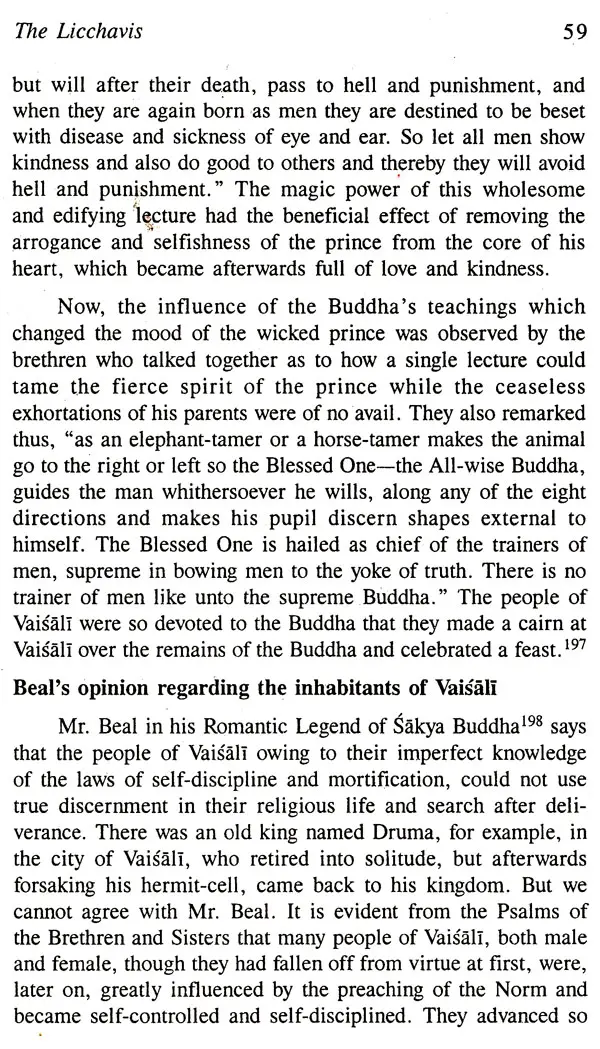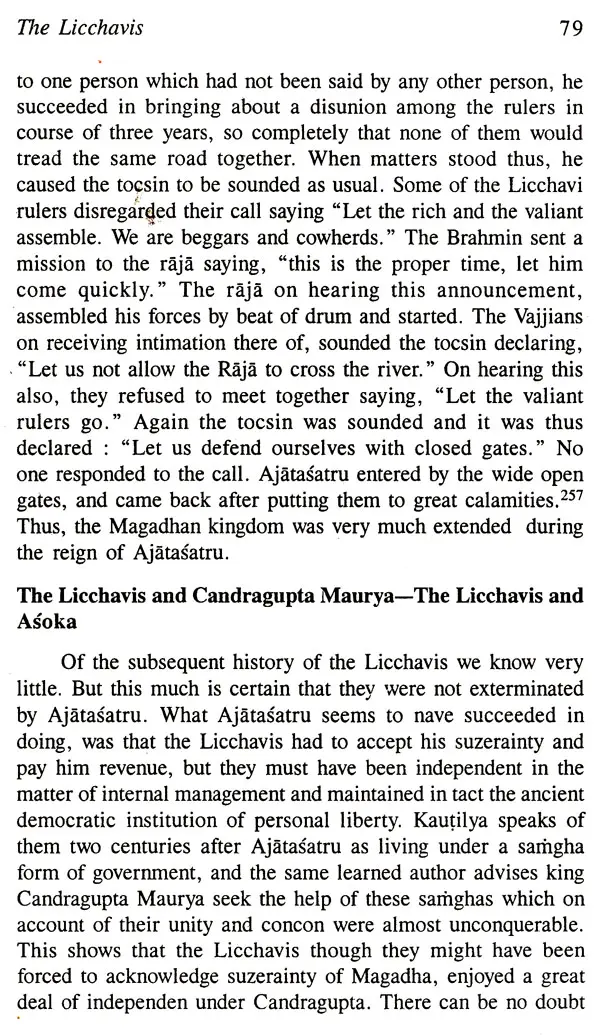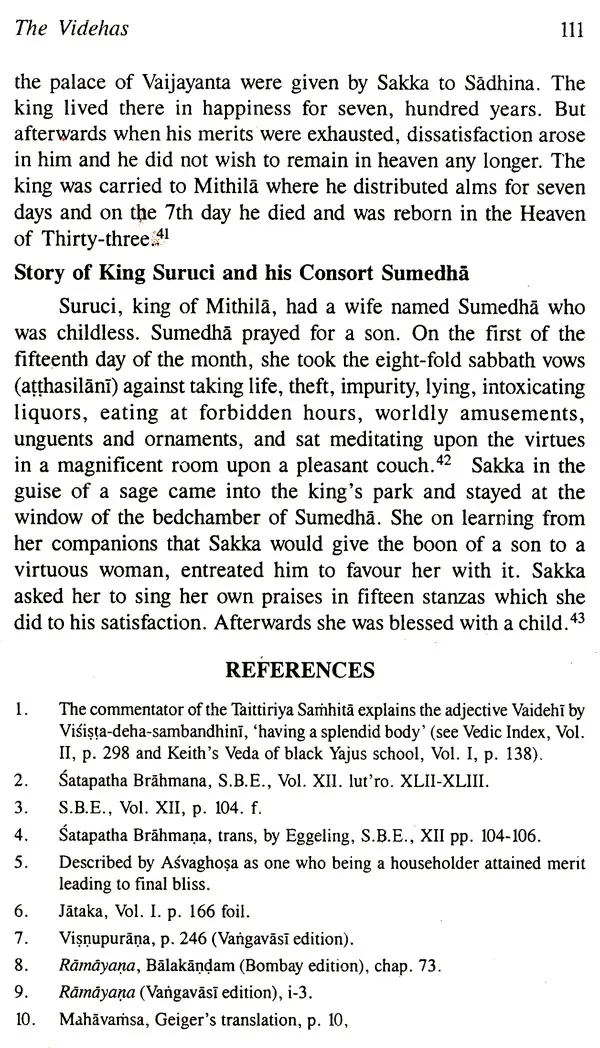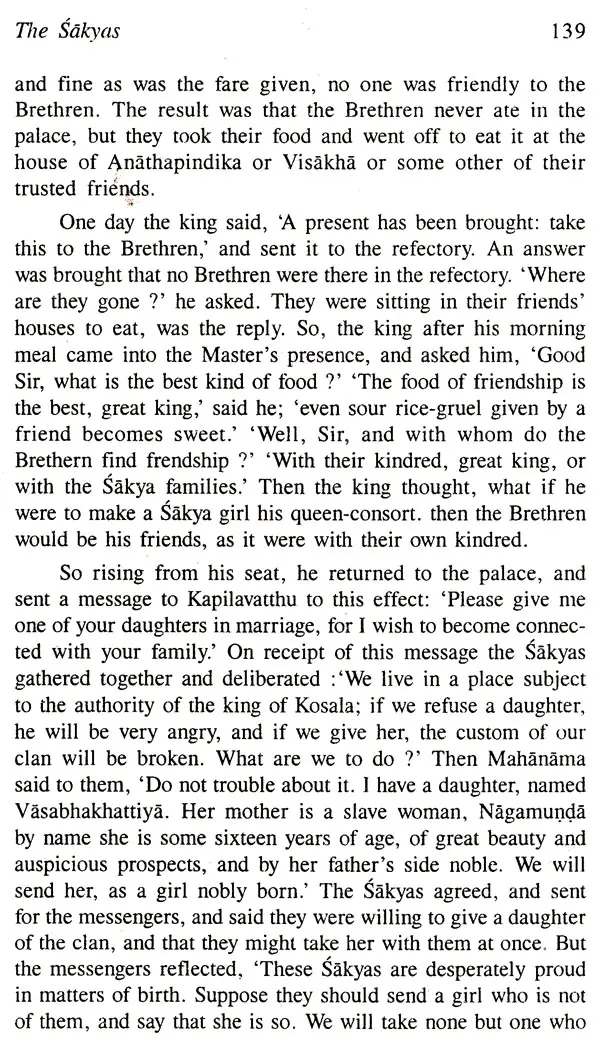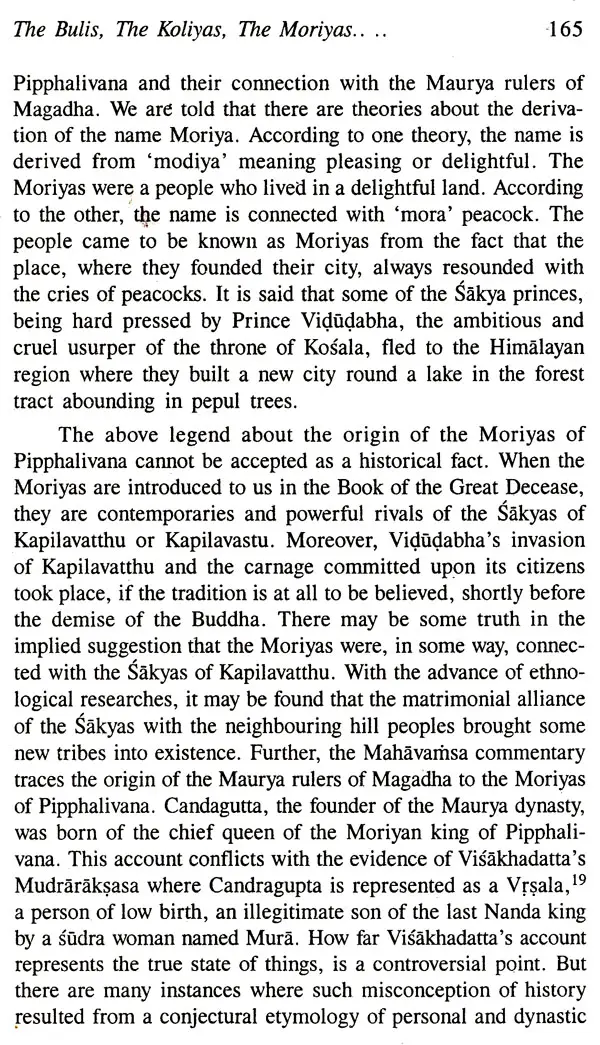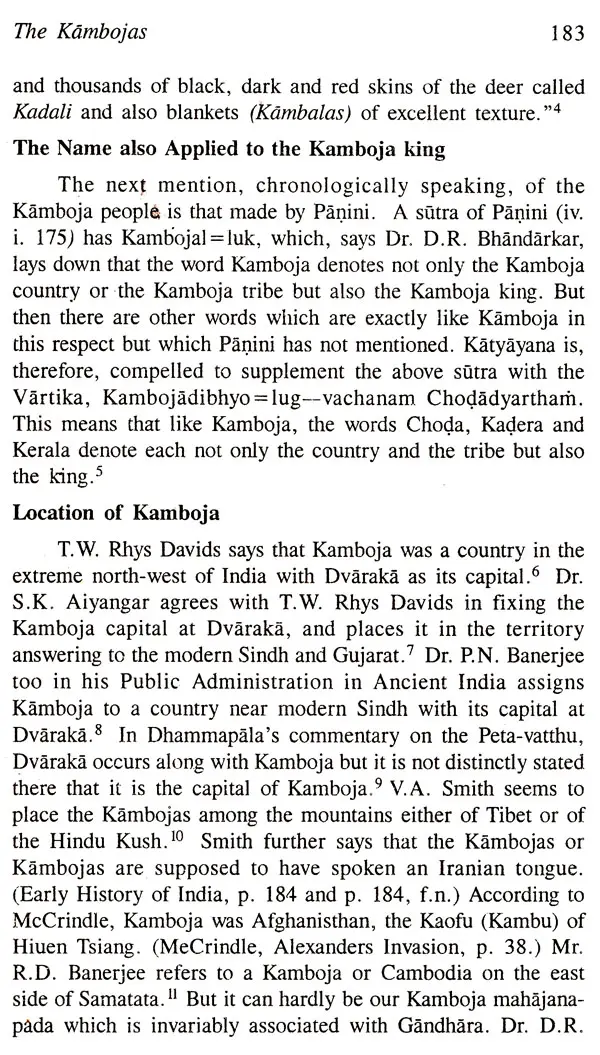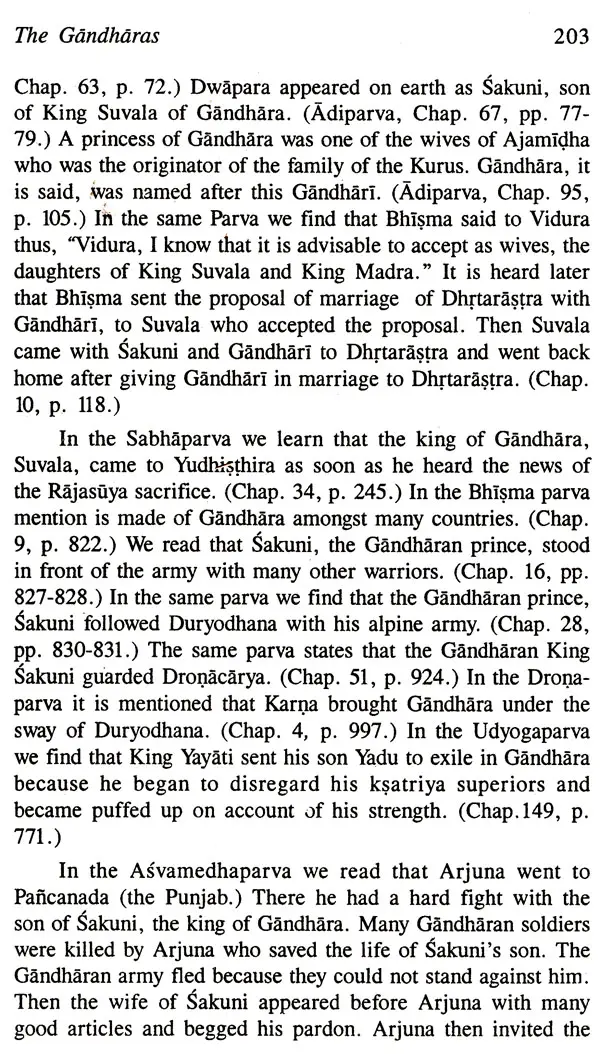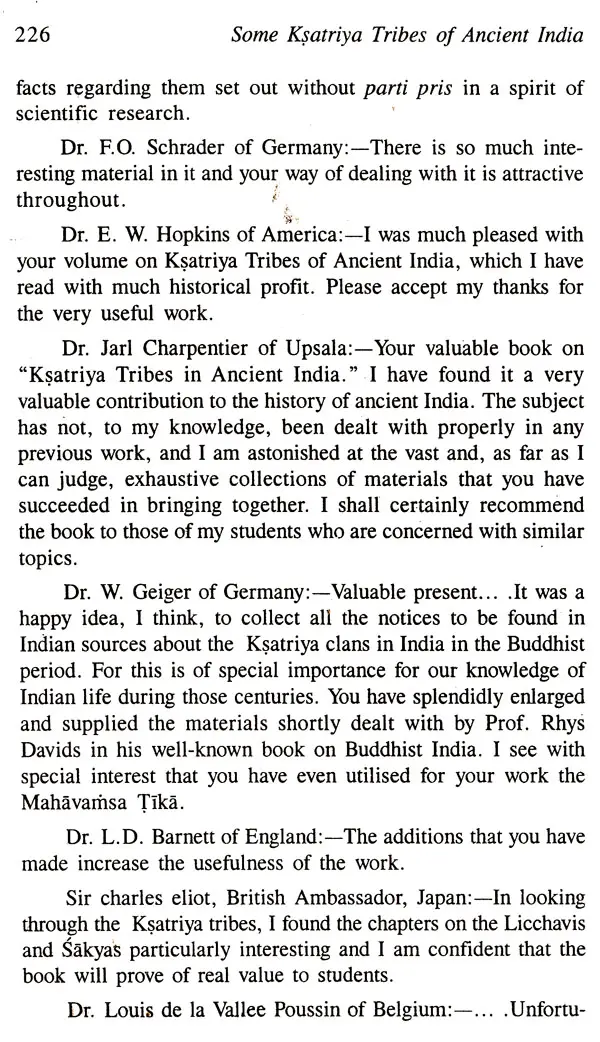
Some Ksatriya Tribes of Ancient India
Book Specification
| Item Code: | UAO134 |
| Author: | Bimala Charan Law |
| Publisher: | Bharatiya Kala Prakashan |
| Language: | English |
| Edition: | 2009 |
| ISBN: | 9788180902291 |
| Pages: | 259 |
| Cover: | HARDCOVER |
| Other Details | 8.80 X 5.80 inch |
| Weight | 460 gm |
Book Description
The entire volume is to present a narrative of the history, manners, customs, etc., of some Ksatriya tribes of ancient India. Scholars like Rhys Davids, Hoernle, Macdonell, Keith, Cunningham and others have no doubt from time to time supplied valuable information regarding some of these tribes but a comprehensive and systematic account of the Ksatriya tribes who play such an important part in the history of Pre-Mauryan India.
The major portion of the present volume embodies the results of my own researches. I have utilised original works, Sanskrit, Päli, and Präkṛt such as the Vedas, the Upanisads, the Maha bharata, the Ramayana, the Puranas, the Nikayas, the Jatakas, the Pali commentaries, the Kalpa Sutra, the Satrakṛtänga, etc.
The most pressing need at the present day is the detailed investigation of carefully chosen aspects of Indian history, and it was a happy thought of Dr. Bimala Charan Law to select for investigation the history of certain Ksatriya tribes of ancient India. Careful collections of facts, such as are contained in this work, form the only sound basis of further research, and the future historian of India will find his task substantially furthered both by the wide knowledge and by the sound judgment of the author. Many things are obscure in the history of these tribes, and it is of special value to have the whole of the facts regarding them set out, without parti pris, in a spirit of scientific research.
There is much here recorded that is of direct historical interest; it is a striking instance of the continuity of Indian history that the great Emperor Samudragupta should boast himself son of a daughter of Licchavis, a tribe famous in the Buddha's time, nine centuries earlier. But there is also material which appeals to the student of Indian politics and of social development. The legendary origin of the Licchavis as of the Sakyas presents us with the marriage of brother and sister, seen also in the Jātaka version of the tale of Rama and Sită. We are, of course, here brought into contact with a problem which is debated in the hymn of Yama and Yami in the Rgveda, while in the Aitareya Brahmana the wise Narada insists that the need of offspring may justify incest; that real facts lie at the back of the legends is attested by the custom of sister marriage enjoined, if not by Zoroaster, at any rate in the later Avesta. It is curious that Buddhism appears to have found the practice less repellent than the priestly authors of the Rgveda. Another relic of primitive practice is found in the usage of the Licchavis to expose their dead; the late Dr. Vincent Smith deduced hence that they were of Tibetan origin, and from this it is an easy step to claim that the Buddha and his doctrine are un-Aryan; a similar, but independent, train of reasoning in the case of Iran has stigmatised the Magi as aboriginal because they approved a like practice. But we must doubtless, with Dr. Law, disabuse ourselves of any over-estimation of the civilisation of the primitive Aryans, and accept the patent fact that they brought with them to Iran and. India habits in no way superior to those of other nomad tribes.
In a work of the kind that I have undertaken, one has got to rely mainly, if not entirely, on literary tradition. I have spared no pains to make full use of the materials that may be gathered from our ancient literature; at the same time I have not overlooked the fact that much of this tradition is late and of little value for historical purposes. I have tried to separate legends from authentic history and have noticed the difference between the two in the marginal notes. But the task is beset with difficulties it is not always easy to draw the dividing line. It must not, however, be thought that my work is based wholly on literary evidence. I have made use of coins and inscriptions so far as they are useful for my purpose.
For some of the photographs and the map and for kind permission to reproduce them in this volume, my thanks are due to the Director-General of Archology of India, Lionel Heath Esqr., Curator, Central Museum, Lahore, Mr. Ramaprasad Chanda, B.A., F.A.S.B., Superintendent, Archaeological Section, Indian Museum, Calcutta, and the Superintendent of the Archaeological Survey, Frontier Circle. I shall be failing in my duty if I do not acknowledge my indebtedness to my friend, Babu Puran Chand Nahar, M.A., B.L., Vakil, High Court, Calcutta, for the photograph of Varddhamana Mahavira so kindly lent to me for reproduction in this volume.
**Contents and Sample Pages**
